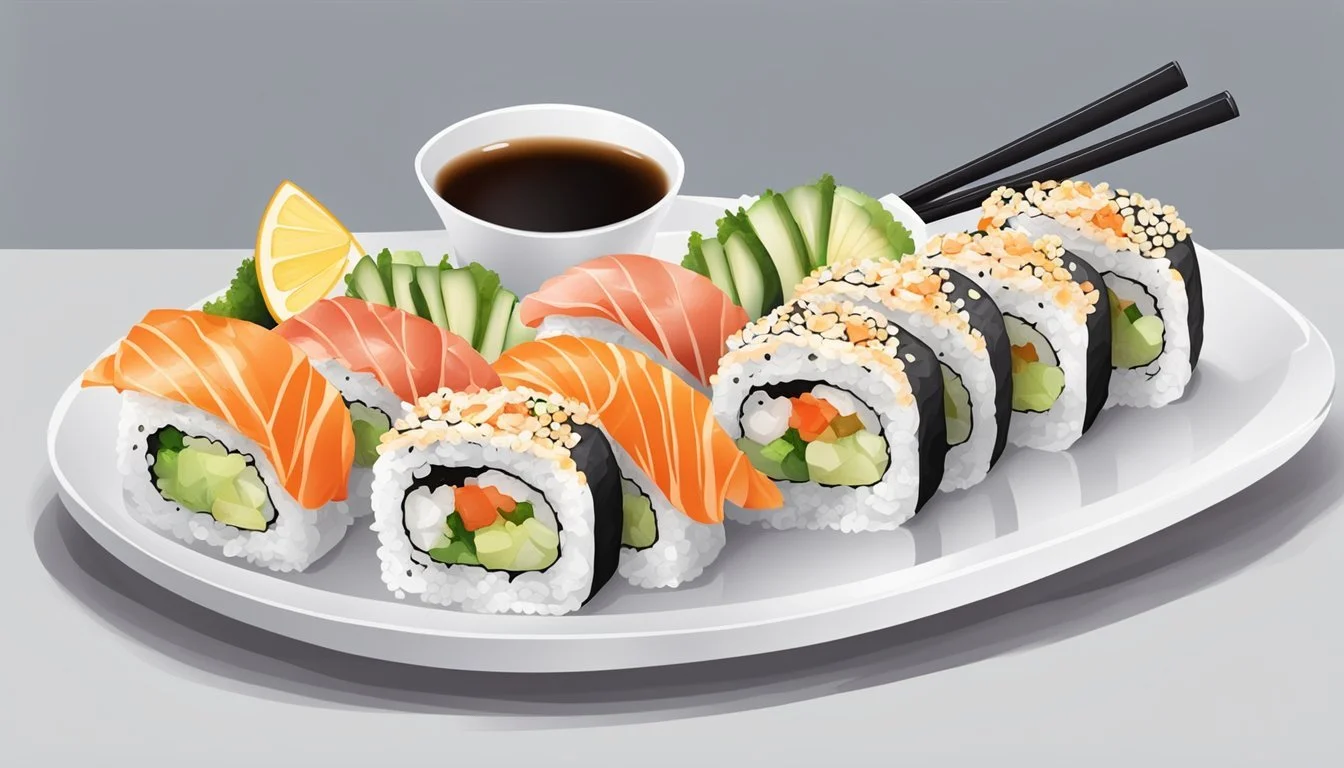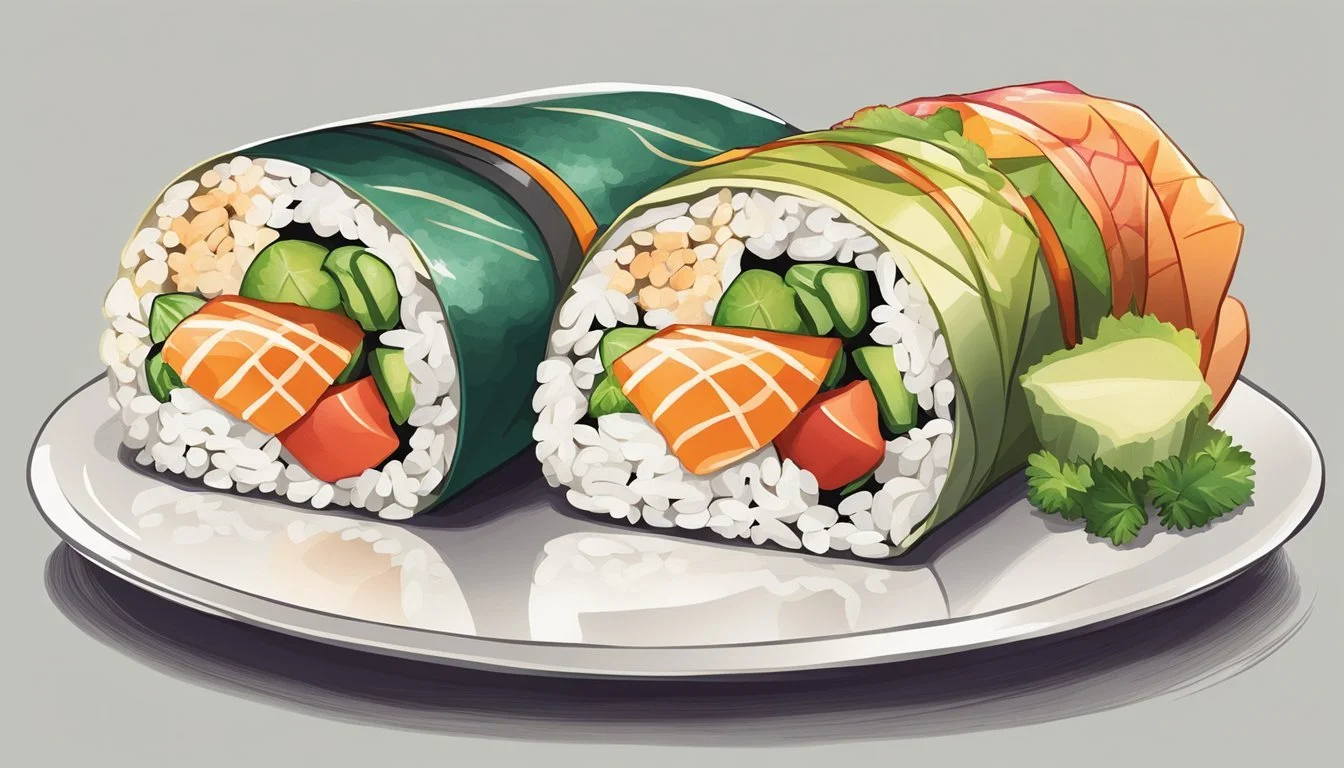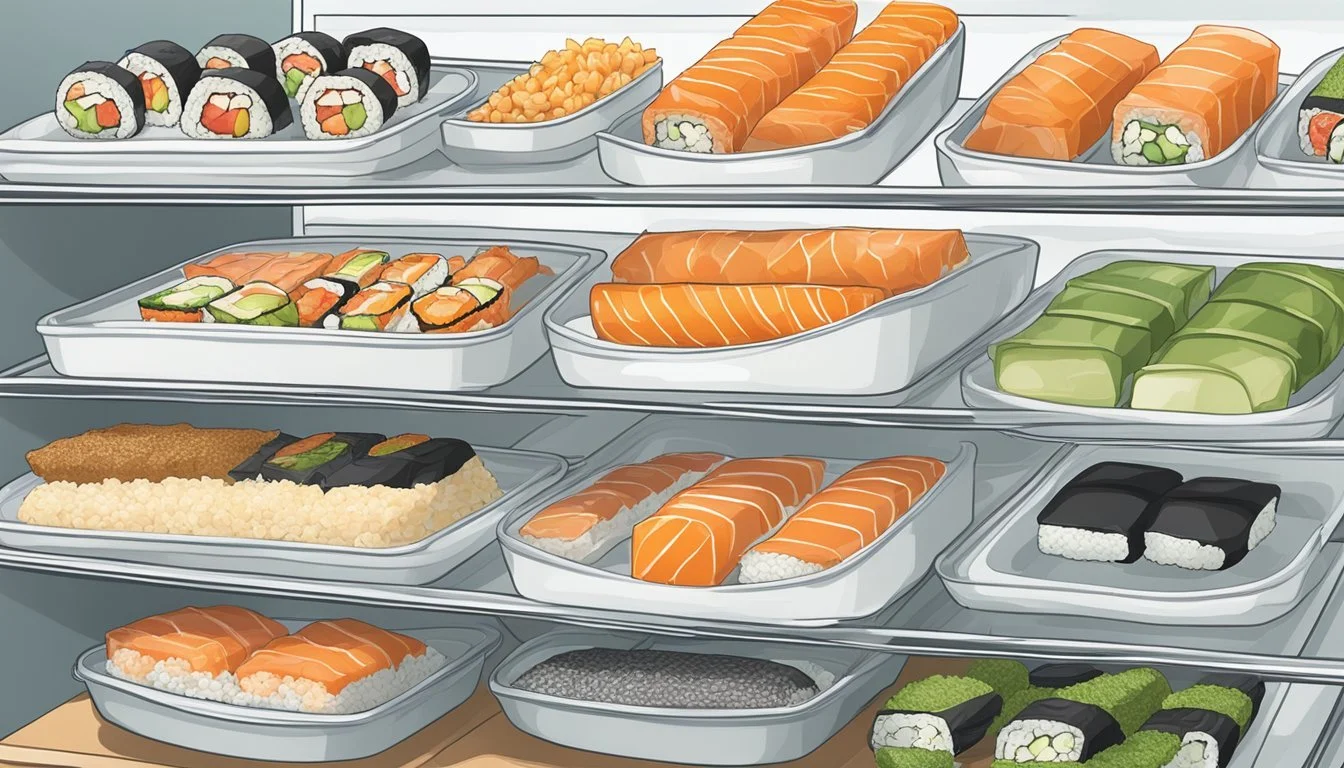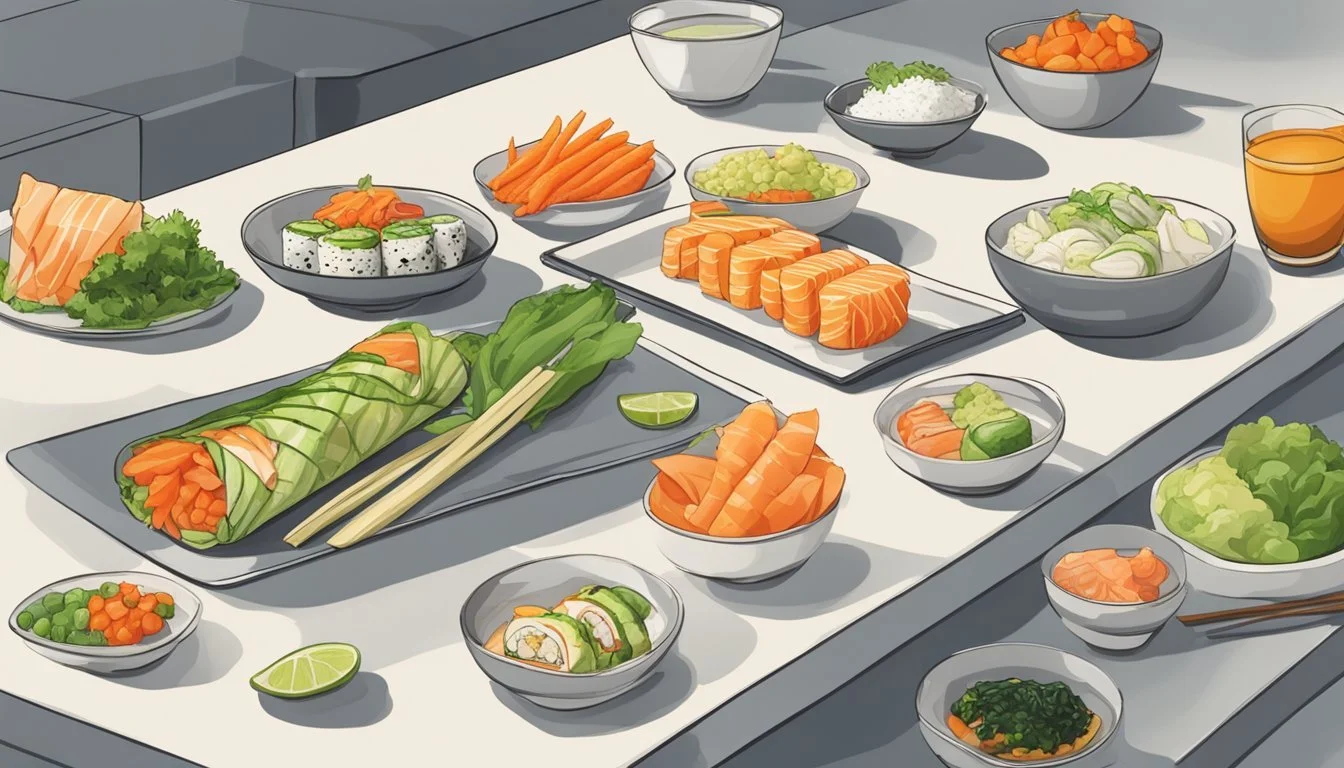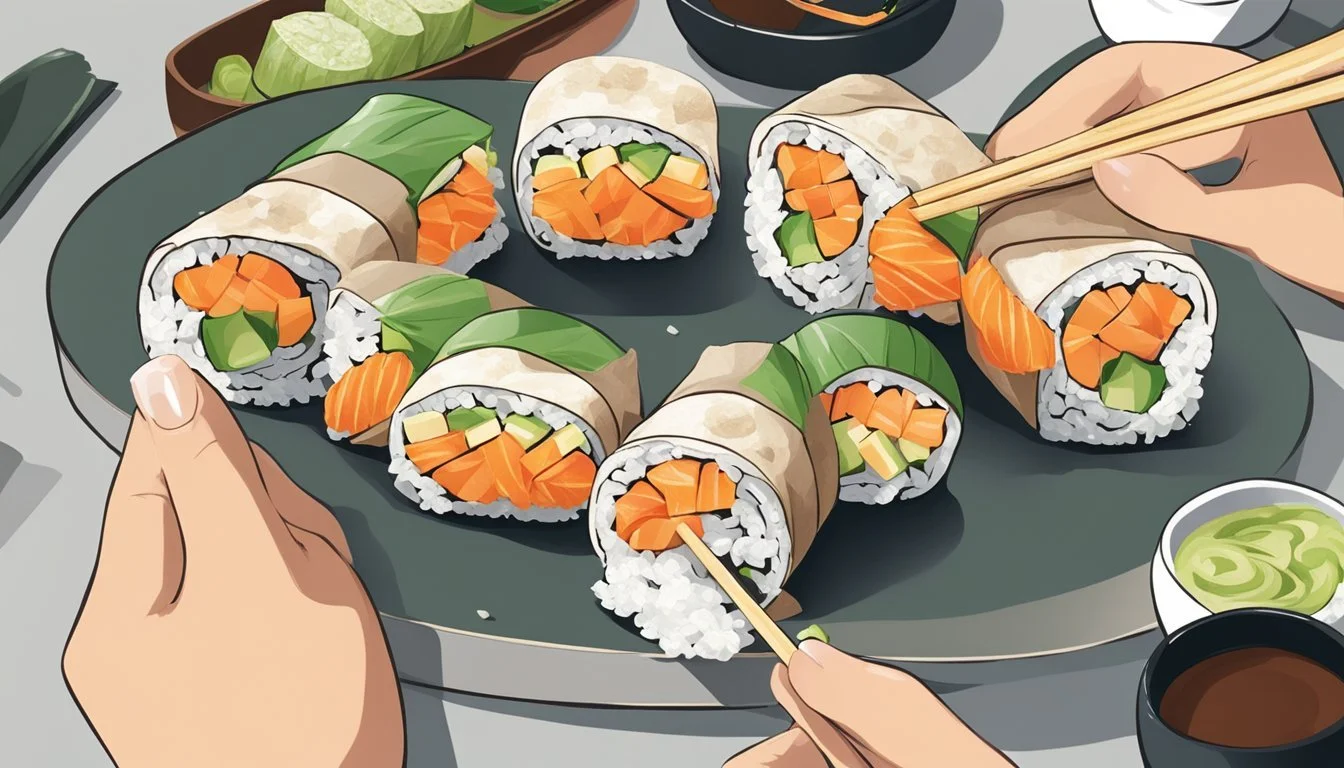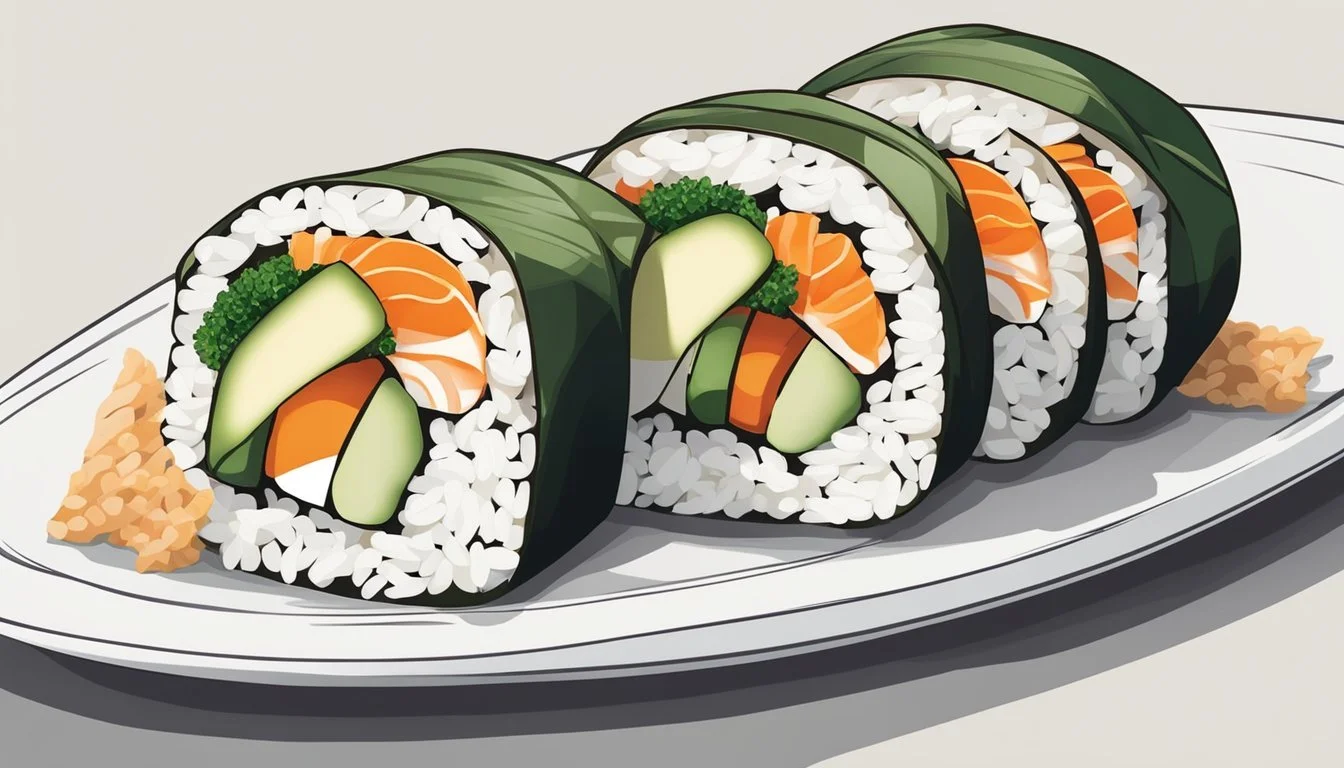How Long Do Freshly Prepared Sushi Burritos Last?
Understanding Storage and Shelf Life
Fresh sushi (What wine goes well with sushi?) burritos, an innovative marriage of traditional sushi elements and the portability of a burrito, have gained popularity for their convenience and flavor. When considering the shelf life of freshly prepared sushi burritos, it's essential to factor in the ingredients used. Typically, sushi burritos contain raw fish, vegetables, rice, and nori. The perishability of these components, especially raw fish, means that sushi burritos are best enjoyed soon after preparation.
Proper storage is crucial for maintaining the freshness and safety of sushi burritos. They should be kept refrigerated at temperatures between 32°F and 38°F, and consumption is recommended within a day to ensure quality and minimize the risk of foodborne illness. If sushi burritos contain exclusively cooked ingredients, they may last a bit longer in the refrigerator, but optimal taste and texture are still achieved when consumed within the first 24 hours.
It's important to recognize that, unlike cooked sushi which may last for 3-4 days in the fridge, the raw components within sushi burritos are more susceptible to spoilage. Any deviation from the cool, consistent environment of a refrigerator can accelerate this process. Consumers should be vigilant for any signs that indicate spoilage such as an off smell, changes in texture, or discoloration, especially when dealing with raw fish.
Overview of Sushi Burritos
Sushi burritos are a culinary innovation that combine the traditional components of sushi with the convenient handheld form of a burrito. They feature nori, a dried seaweed sheet, as the wrap holding the contents together. The heart of a sushi burrito is sushi rice, which is seasoned with vinegar, sugar, and salt to add flavor and stickiness.
The fillings typically include a variety of fish — often raw and sushi-grade — such as salmon or tuna (What wine goes well with tuna?). However, there are multiple variations that cater to different dietary preferences, including options with cooked fish or purely vegetarian ingredients. Along with fish, vegetables play a vital role in adding crunch, taste, and nutritional value. Common choices are cucumbers, bell peppers, and leafy greens.
Avocado is a beloved inclusion in sushi burritos, prized for its creamy texture and rich taste, which balances the freshness of the other components. When building a sushi burrito, chefs layer these ingredients in careful proportions to ensure a harmonious blend of flavors and textures.
Sushi burritos are often custom-made and served immediately to maintain the intended experience of freshness and quality. Given the use of raw fish, it is crucial to consume them relatively soon after preparation to prevent the risk of foodborne illnesses. It's worth noting that the perishable nature of the ingredients affects the longevity of sushi burritos, which do not last as long as other food items when stored.
Determining Freshness
When assessing the freshness of sushi burritos, one must consider several sensory characteristics: texture, flavor, odor, and color.
Texture: A fresh sushi burrito should have rice that is moist and firm, neither mushy nor hard. The nori wrap, if used, should be crisp, not chewy or soggy. Fresh fillings like fish should yield slightly to the touch but remain intact and should not be slimy.
Flavor: The taste should be clean and not overwhelming. The rice should have a slight tang from the vinegar, while the ingredients inside should highlight their natural flavors without any hint of bitterness or sourness that could indicate spoilage.
Odor: Fresh sushi burritos give off a mild, oceanic scent if they contain fish. There should not be any strong or unpleasant odors, as these are indicators that the ingredients are no longer fresh.
Color: Observe the rice and fillings for vibrant, natural colors. The rice should be uniform in color, and fish fillings should have a glossy appearance rather than a dull hue.
Sensory Characteristic Indicator of Freshness Indicator of Spoilage Texture Firm rice, crisp nori, intact fish Mushy rice, chewy nori, slimy fish Flavor Clean, balanced Bitter, sour, off tastes Odor Mild, oceanic scent Strong, unpleasant odors Color Vibrant, glossy Dull, discolored
One should always exercise caution and trust their senses. If there are any doubts about the sushi burrito's freshness, it is best to err on the side of safety and avoid consumption.
Proper Storage Methods
When preserving the freshness of sushi burritos, proper storage methods are critical. They should be placed in an airtight container or wrapped tightly with plastic wrap or foil to protect from air exposure and moisture loss.
Storing sushi burritos in the refrigerator is essential for maintaining freshness and ensuring food safety. The recommended temperature range for a refrigerator is between 32°F to 40°F (0°C to 4°C). This temperature slows down bacterial growth and preserves the quality of the sushi burrito.
Table: Sushi Burrito Storage Recommendations
Storage Method Benefit Duration Airtight Container Minimizes air exposure, retains moisture 1-2 Days Plastic Wrap / Foil Protects from other food odors, prevents drying 1-2 Days Refrigerator (32°F-40°F) Slows bacterial growth, maintains freshness 1-2 Days
It's important to store sushi burritos away from strong-smelling foods to keep flavors intact. For optimal safety, sushi burritos containing raw ingredients should ideally be eaten within 24 hours. Cooked ingredients may extend the window slightly, but it is not recommended to exceed 48 hours. Always prioritize a fresher consumption time when possible for both safety and quality.
Factors Affecting Shelf Life
The shelf life of freshly prepared sushi burritos primarily depends on the quality of ingredients and storage conditions. These factors determine how long sushi burritos remain safe and enjoyable to consume.
Ingredients Quality
The quality of ingredients in sushi burritos is paramount. Sushi-grade fish should be fresh and properly handled to ensure safety. The use of fresh vegetables and properly prepared sushi rice with the right balance of vinegar plays a significant role in extending shelf life.
Types of Ingredients
Raw fish: Sushi burritos with raw fish, particularly fatty fish like salmon and tuna, have a limited refrigerated shelf life of 1 to 2 days.
Cooked fish: Burritos containing cooked fish can last longer, typically 3 to 4 days when refrigerated.
Vegetables and other ingredients: Fresh vegetables and items like nori, sesame seeds, and pickled ginger may last longer but their sensory qualities deteriorate over time.
Storage Conditions
Storage conditions are critical in determining shelf life.
Refrigeration: Store sushi burritos in the fridge at temperatures below 40°F (4°C).
Airtight containers: Use these to protect the burritos from air exposure and cross-contamination.
Room temperature: Avoid leaving sushi burritos at room temperature for more than 2 hours.
Preparation Methods
How sushi burritos are prepared impacts their shelf life.
Hygiene: Ensure preparation surfaces and utensils are clean.
Assembly: Sushi burritos rolled tightly with nori help maintain shape and freshness.
Rice preparation: Rice seasoned with the proper amount of vinegar can have a slight preservative effect due to the acidic environment it creates.
Tips for Extending Shelf Life
When dealing with sushi burritos, maintaining freshness and preventing bacterial growth are key to extending their shelf life and avoiding foodborne illness. Here are several tips to preserve your sushi burrito:
Refrigeration: Keep sushi burritos at or below 40°F (4°C). Refrigeration slows bacterial growth and is crucial for dishes featuring raw fish.
Wrap Tightly: Wrap sushi burritos in cling film or aluminum foil to minimize air exposure, which can dry out the ingredients.
Airtight Containers: Store in airtight containers to maintain moisture and protect from contaminants.
Consume Quickly: For optimal freshness, consume leftover sushi burritos within 24 hours.
Freezing: Although not recommended for best quality, sushi burritos can be frozen to extend shelf life.
Prevent Freezer Burn: If freezing, ensure the sushi burrito is wrapped tightly to prevent freezer burn.
Thawing: Thaw in the refrigerator, not at room temperature, to reduce the risk of bacterial proliferation.
General Handling:
Clean Utensils: Always use clean utensils when handling sushi burritos to reduce contamination.
Avoid Direct Sunlight: Store them away from direct sunlight, which can increase the temperature and promote bacteria growth.
By following these storage practices, one can help ensure their sushi burritos remain fresh and safe to eat for a longer period.
Signs of Spoilage
When assessing the freshness of sushi burritos, individuals should be mindful of several indicators of spoilage. These signs are critical as sushi burritos are highly perishable due to the presence of raw fish and other ingredients that can harbor bacteria over time.
Odor: A fresh sushi burrito should have a mild, ocean-like scent. The presence of a sour or ammonia-like smell suggests bacterial growth and spoilage.
Mold: Visible mold growth is a clear signal that the sushi burrito is no longer safe for consumption. Mold may present as fuzzy, discolored spots that should not be present on fresh food.
Texture: Fresh sushi burritos should not have a slimy texture. A slimy coat, especially on the fish, indicates that the sushi burrito is past its prime and possibly harbors harmful bacteria.
Discoloration: If the ingredients in the sushi burrito, particularly the fish, exhibit any unusual changes in color, this could be a sign of spoilage. Fresh fish should display vibrant, natural colors, and any dullness or discoloration can be a warning.
List of Quick Checks:
Smell: Check for bad odors.
Sight: Look for mold and discoloration.
Touch: Feel for slime or unusual textures.
Consumers should always trust their senses and practice food safety when consuming sushi burritos. If any signs of spoilage are evident, it is best to err on the side of caution and avoid eating the product to prevent foodborne illness.
Health Risks Associated with Spoiled Sushi
Sushi burritos, a fusion of traditional sushi and burrito-style wrapping, require the same careful handling and storage as classic sushi to ensure food safety. Consuming spoiled sushi, including sushi burritos, introduces multiple health risks due to foodborne illnesses. These risks stem from the growth of harmful bacteria, parasites, and potential accumulation of mercury.
Bacteria and Parasites: Sushi typically includes raw fish, which may harbor bacteria such as Salmonella and Listeria, or parasites like Anisakis worms. The Food and Drug Administration (FDA) provides guidelines to minimize these risks, recommending that sushi-grade fish be frozen to kill parasites before consumption. However, improper handling or prolonged storage can negate these preventive measures. Symptoms from infections may include nausea, vomiting, diarrhea, and abdominal pain and usually appear within hours to a few days after consumption.
Mercury Levels: Mercury content is a concern in larger fish, such as tuna, commonly used in sushi burritos. Regular consumption of high-mercury fish can lead to mercury accumulation in the body, posing a risk especially for pregnant women and young children, as per FDA advisories.
Preventing Foodborne Illnesses: To mitigate these health risks:
Store sushi burritos in the refrigerator at or below 40°F (4°C)
Consume them within 24 hours
Ensure they are wrapped or stored in airtight containers to maintain freshness
Be wary of sushi that has an unusual odor, color, or texture
By adhering to these precautions, consumers can significantly reduce the likelihood of foodborne illnesses associated with spoiled sushi.
Sushi Burritos Consumption Best Practices
When enjoying fresh sushi burritos, consumers must follow best practices to prevent foodborne illness and minimize health risks. Here are the key considerations for safe food handling and consumption:
Storage: Sushi burritos should be stored at refrigerator temperatures (below 40°F or 4°C) if not consumed immediately. The risk of foodborne illness increases when sushi burritos are kept at room temperature, as bacteria can multiply rapidly.
Timing: To ensure freshness and safety, consume sushi burritos within 24 hours of preparation. The longer sushi is kept, even under refrigeration, the higher the risk of developing harmful bacteria.
Temperature Zone Duration Safety Refrigeration Within 24 hours Safest Room Temperature Up to 2 hours max Consume immediately
Hygiene: Always use clean utensils and surfaces when handling sushi burritos. Proper hygiene practices by the preparer, such as frequent hand-washing, are crucial in preventing contamination.
Inspection: Before consuming, visually inspect and smell the sushi burrito. Discoloration, unpleasant odor, or any sign of spoilage should be a warning to discard the burrito immediately to avoid any health risks associated with spoiled food.
By adhering to these guidelines, consumers can confidently enjoy sushi burritos while ensuring their health is not compromised.
Guidelines for Leftovers and Takeout
When it comes to leftovers and takeout, particularly freshly prepared sushi burritos, proper storage and timely consumption are key to ensuring safety and quality. Here are some storage guidelines:
Refrigeration: Fresh sushi burritos should be refrigerated at 40°F (4°C) or below. Sushi burritos, which often contain raw fish and other perishable ingredients, are best consumed when they are fresh.
Expiration: Leftover sushi burritos should ideally be consumed within 24 hours. The quality and safety of sushi can deteriorate quickly, hence it's important not to overextend its shelf life.
Safe Food Handling:
After purchase or eating, refrigerate remaining sushi burritos within 2 hours.
Use an airtight container to maintain freshness and prevent contamination.
A simple table to summarize:
Food Item Refrigeration Requirement Expiration after Purchase Sushi Burritos (raw) 40°F (4°C) or below Within 24 hours Sushi Burritos (cooked) 40°F (4°C) or below Maximum of 3 days
Restaurants and takeout establishments must adhere to safe food handling practices to ensure the longevity and safety of sushi burritos. Leftovers should be packed in a manner that reduces risk of spoilage. Consumers are urged to respect the expiry dates provided by restaurants to prevent foodborne illnesses.
Remembering these points can ensure that the enjoyment of a sushi burrito doesn't turn into a health risk.
Special Considerations for Sushi Burritos
The proper handling and storage of sushi burritos are vital, considering they integrate both traditional Japanese cuisine with various fusion ingredients. Their unique build and components require careful attention to maintain their freshness and quality.
Fusion Ingredients Impact
Fusion ingredients such as sriracha or unconventional fillings from the California roll can affect the lifespan of a sushi burrito. The introduction of these diverse components can influence shelf-life, as some ingredients may spoil faster than others. For example:
Sriracha and other sauces: These can make the sushi rice soggy over time, leading to a degradation in texture sooner than expected.
Fillings based on California roll components like imitation crab and avocado may cause the sushi burritos to spoil faster due to their perishability.
Unique Aspects of Sushi Burritos
Sushi burritos differ from traditional forms like temaki, uramaki, and chirashi in their size and method of consumption, which impacts their freshness. They are a delicate dish that tends to have a shorter window of prime edibility compared to other sushi forms. Specifically:
Sushi rice: It is crucial for its stickiness to maintain the burrito's shape, but this same quality can trap moisture and accelerate spoilage.
Freshness: A sushi burrito is best when consumed immediately, as the risk of bacterial growth increases with time, especially at room temperature.

